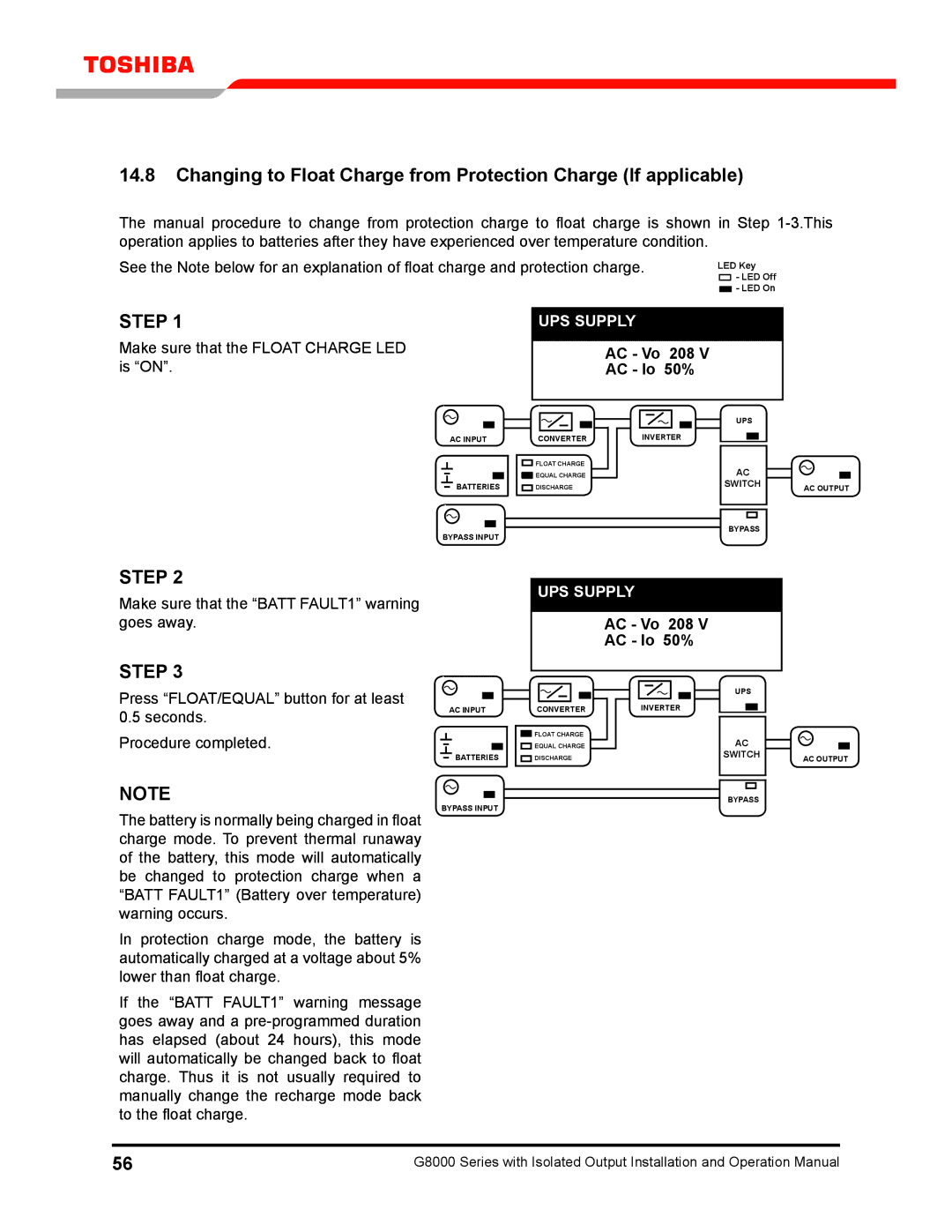
14.8Changing to Float Charge from Protection Charge (If applicable)
The manual procedure to change from protection charge to float charge is shown in Step
See the Note below for an explanation of float charge and protection charge.
LED Key
![]()
![]() - LED Off
- LED Off
![]()
![]() - LED On
- LED On
STEP 1
Make sure that the FLOAT CHARGE LED is “ON”.
AC INPUT
![]() BATTERIES
BATTERIES
BYPASS INPUT
UPS SUPPLY
AC - Vo 208 V
AC - Io 50%
| UPS |
|
CONVERTER | INVERTER |
|
FLOAT CHARGE | AC |
|
EQUAL CHARGE |
| |
DISCHARGE | SWITCH | AC OUTPUT |
|
BYPASS
STEP 2
Make sure that the “BATT FAULT1” warning goes away.
STEP 3
Press “FLOAT/EQUAL” button for at least
0.5seconds. Procedure completed.
AC INPUT
![]() BATTERIES
BATTERIES
UPS SUPPLY
AC - Vo 208 V
AC - Io 50%
| UPS |
|
CONVERTER | INVERTER |
|
FLOAT CHARGE | AC |
|
EQUAL CHARGE |
| |
DISCHARGE | SWITCH | AC OUTPUT |
|
Note
The battery is normally being charged in float charge mode. To prevent thermal runaway of the battery, this mode will automatically be changed to protection charge when a “BATT FAULT1” (Battery over temperature) warning occurs.
BYPASS INPUT
BYPASS
In protection charge mode, the battery is automatically charged at a voltage about 5% lower than float charge.
If the “BATT FAULT1” warning message goes away and a
56 | G8000 Series with Isolated Output Installation and Operation Manual |
